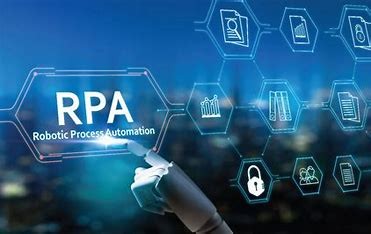Discover how robotic process automation (RPA) is revolutionizing business operations by automating repetitive tasks, improving productivity, and optimizing workflows to drive efficiency and innovation across industries.

Robotic Process Automation (RPA) is transforming the way businesses operate, empowering organizations to automate repetitive tasks, streamline processes, and enhance productivity through the use of software robots or "bots." By leveraging RPA technologies, businesses can automate manual tasks, eliminate human error, and free up valuable time and resources for more strategic initiatives. In this comprehensive guide, we'll explore the role of RPA in modern business operations, its applications, benefits, challenges, and the potential for driving efficiency and innovation in diverse industries.
1. Understanding Robotic Process Automation (RPA): Robotic Process Automation (RPA) refers to the use of software robots or "bots" to automate repetitive, rules-based tasks and processes traditionally performed by humans. RPA bots interact with applications, systems, and data sources just like human users, executing tasks such as data entry, data extraction, report generation, and system integration with speed, accuracy, and efficiency.
2. Applications of RPA:
Data Entry and Processing: RPA automates data entry and processing tasks, such as invoice processing, order fulfillment, and payroll processing, by extracting data from documents, forms, and emails, and entering it into enterprise systems with minimal human intervention.
Report Generation and Analysis: RPA generates reports, dashboards, and analytics by collecting, aggregating, and analyzing data from multiple sources, systems, and databases, enabling real-time insights, decision-making, and business intelligence across organizations.
Customer Service and Support: RPA automates customer service and support processes, such as ticket routing, inquiries handling, and case management, by responding to customer queries, updating records, and escalating issues to human agents when necessary, improving response times and customer satisfaction.
Finance and Accounting: RPA streamlines finance and accounting processes, including accounts payable, accounts receivable, and financial reconciliation, by automating repetitive tasks, such as invoice processing, payment processing, and ledger reconciliation, reducing errors and accelerating financial close cycles.
Supply Chain Management: RPA optimizes supply chain management processes, such as inventory management, order fulfillment, and logistics tracking, by automating inventory updates, order processing, and shipment notifications, improving inventory visibility and fulfillment accuracy.
3. Benefits of RPA:
4. Challenges and Considerations:
5. Future Trends in RPA:
Cognitive Automation and AI Integration: RPA is evolving towards cognitive automation, incorporating artificial intelligence (AI) technologies such as machine learning, natural language processing, and computer vision to enable intelligent automation, decision-making, and cognitive capabilities in RPA bots.
Hyperautomation and Process Discovery: Hyperautomation combines RPA with AI, analytics, and process mining technologies to automate end-to-end processes, identify automation opportunities, and optimize workflows through process discovery, analysis, and optimization.
Cloud-Based RPA Platforms: Cloud-based RPA platforms offer scalability, agility, and flexibility for deploying, managing, and scaling RPA initiatives in the cloud, providing organizations with on-demand access to RPA capabilities, resources, and infrastructure.
Intelligent Document Processing (IDP): Intelligent Document Processing (IDP) combines RPA with AI-powered document recognition and extraction capabilities to automate document-centric processes, such as document classification, data extraction, and content digitization, improving accuracy and efficiency.
Viral FAQs:
Are you curious about something? Are you intrested in our any Service or Product? Do you have some kind of problem with our Services or Products?
